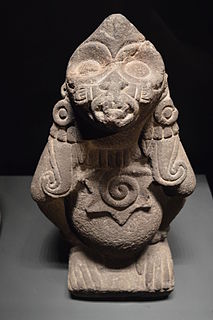 W
WThe Acolhua are a Mesoamerican people who arrived in the Valley of Mexico in or around the year 1200 CE. The Acolhua were a sister culture of the Aztecs as well as the Tepanec, Chalca, Xochimilca and others.
 W
WThe Aztecs were a Mesoamerican culture that flourished in central Mexico in the post-classic period from 1300 to 1521. The Aztec peoples included different ethnic groups of central Mexico, particularly those groups who spoke the Nahuatl language and who dominated large parts of Mesoamerica from the 14th to the 16th centuries. Aztec culture was organized into city-states (altepetl), some of which joined to form alliances, political confederations, or empires. The Aztec Empire was a confederation of three city-states established in 1427: Tenochtitlan, city-state of the Mexica or Tenochca; Texcoco; and Tlacopan, previously part of the Tepanec empire, whose dominant power was Azcapotzalco. Although the term Aztecs is often narrowly restricted to the Mexica of Tenochtitlan, it is also broadly used to refer to Nahua polities or peoples of central Mexico in the prehispanic era, as well as the Spanish colonial era (1521–1821). The definitions of Aztec and Aztecs have long been the topic of scholarly discussion ever since German scientist Alexander von Humboldt established its common usage in the early nineteenth century.
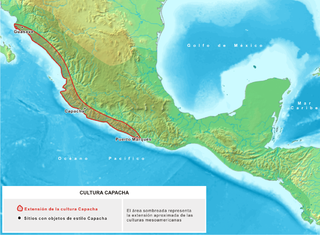 W
WCapacha is an archaeological site located about 6 kilometers northeast of the Colima Municipality, in Colima State, Mexico. This site is the heart of the ancient Mesoamerican Capacha Culture.
 W
WThe Chajoma were a Kaqchikel-speaking Maya people of the Late Postclassic period, with a large kingdom in the highlands of Guatemala. According to the indigenous chronicles of the K'iche' and the Kaqchikel, there were three principal Postclassic highland kingdoms; the K'iche', the Kaqchikel and the Chajoma. In the Annals of the Cakchiquels the Chajoma of Jilotepeque were always referred to as the akajal vinak, in the Popul Vuh these can probably be identified with the akul vinak. Both akajal vinak and akul vinak mean "the bee people" or "the hive people".
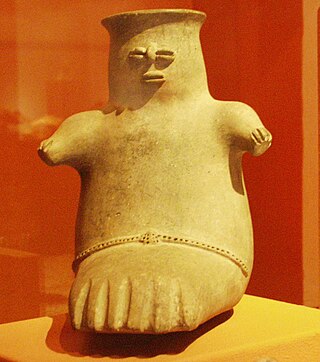 W
WChupícuaro is an important prehispanic archeological site from the late preclassical or formative period. The culture that takes its name from the site dates to 400 BC to 200 AD, or alternatively 500 BC to 300 AD., although some academics suggest an origin as early as 800 BC.
 W
WSophie Dobzhansky Coe was an anthropologist, food historian, and author, primarily known for her work on the history of chocolate.
 W
WThe Huastec civilization was a pre-Columbian civilization of Mesoamerica, occupying a territory on the Gulf coast of Mexico that included the northern portion of Veracruz state, and neighbouring regions of the states of Hidalgo, Querétaro, San Luis Potosí, and Tamaulipas. The Huastec people were an early offshoot of the Maya peoples that migrated northwards.
 W
WThe Itza are a Mayan ethnic group native to the Péten region of northern Guatemala and parts of Belize. The majority of Itza are inhabitants of the city of Flores on Lake Petén Itzá, and nearby portions of Belize where they form an ethnic minority.
 W
WThe Ixil are a Maya people indigenous to Guatemala. The Ixil live in three municipalities in the Cuchumatanes mountains in the northern part of the department El Quiché. These municipalities, also known as the Ixil Triangle, are Santa Maria Nebaj, San Gaspar Chajul, and San Juan Cotzal.
 W
WThe Kejache were a Maya people in the southern Yucatán Peninsula at the time of Spanish contact in the 17th century. The Kejache territory was located in the Petén Basin in a region that takes in parts of both Guatemala and Mexico. Linguistic evidence indicates that the Kejache shared a common origin with the neighbouring Itzas to their southeast and the Kejache may have occupied the general region since the Classic period. The Kejache were initially contacted by conquistador Hernán Cortés in 1525; they were later in prolonged contact with the Spanish as the latter opened a route southwards towards Lake Petén Itzá.
 W
WThe Mixtecs, or Mixtecos, are indigenous Mesoamerican peoples of Mexico inhabiting the region known as La Mixteca of Oaxaca and Puebla as well as the state of Guerrero's Región Montañas, and Región Costa Chica, which covers parts of the Mexican states of Oaxaca, Guerrero and Puebla.
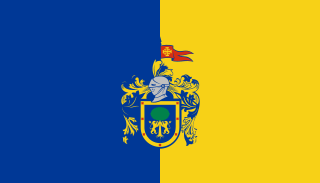 W
WJalisco, officially the Free and Sovereign State of Jalisco, is one of the 32 Federal Entities of Mexico. It is located in Western Mexico and is bordered by six states which are Nayarit, Zacatecas, Aguascalientes, Guanajuato, Michoacán, and Colima. Jalisco is divided into 125 municipalities, and its capital city is Guadalajara.
 W
WThe Zapotec civilization was an indigenous pre-Columbian civilization that flourished in the Valley of Oaxaca in Mesoamerica. Archaeological evidence shows that their culture originated at least 2,500 years ago. The Zapotec archaeological site at the ancient city of Monte Albán has monumental buildings, ball courts, magnificent tombs and grave goods, including finely worked gold jewelry. Monte Albán was one of the first major cities in Mesoamerica. It was the center of a Zapotec state that dominated much of the territory which today is known as the Mexican state of Oaxaca.
 W
WThe Kowoj [koʔwox] was a Maya group and polity, from the Late Postclassic period of Mesoamerican chronology. The Kowoj claimed to have migrated from Mayapan sometime after the city's collapse in 1441 AD. Indigenous documents also describe Kowoj in Mayapan and linguistic data indicate migrations between the Yucatán Peninsula and the Petén region.
 W
WThe Kʼicheʼ kingdom of Qʼumarkaj was a state in the highlands of modern-day Guatemala which was founded by the Kʼicheʼ (Quiché) Maya in the thirteenth century, and which expanded through the fifteenth century until it was conquered by Spanish and Nahua forces led by Pedro de Alvarado in 1524.
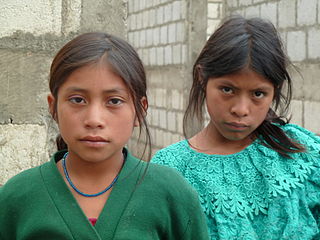 W
WThe Mam are an indigenous people in the western highlands of Guatemala and in south-western Mexico who speak the Mam language.
 W
WThe Mazatec are an indigenous people of Mexico who inhabit the Sierra Mazateca in the state of Oaxaca and some communities in the adjacent states of Puebla and Veracruz.
 W
WMetztitlán is a town and one of the 84 municipalities of Hidalgo, in central-eastern Mexico. The municipality covers an area of 814.7 km².
 W
WThe Mexica, or Mexicas, were a Nahuatl-speaking indigenous people of the Valley of Mexico who were the rulers of the Aztec Empire. They were the last Nahua-speaking immigrants to enter the Basin of Mexico after the decline of the Toltecs. The group was also known as the Culhua-Mexica in recognition of its kinship alliance with the neighboring Culhua, descendants of the revered Toltecs, who occupied the Toltec capital of Tula from the 10th to the 12th centuries. The Mexica of Tenochtitlan were additionally referred to as the "Tenochca," a term associated with the name of their altepetl (city-state), Tenochtitlan, and Tenochtitlan's founding leader, Tenoch. The Mexica established Mexico Tenochtitlan, a settlement on an island in Lake Texcoco. A dissident group in Mexico-Tenochtitlan separated and founded the settlement of Mexico-Tlatelolco with its own dynastic lineage. The Mexica of Tlatelolco were also known as Tlatelolca.
 W
WThe Mezcala culture is the name given to a Mesoamerican culture that was based in the Guerrero state of southwestern Mexico, in the upper Balsas River region. The culture is poorly understood but is believed to have developed during the Middle and Late Preclassic periods of Mesoamerican chronology, between 700 and 200 BC. The culture continued into the Classic period when it coexisted with the great metropolis of Teotihuacan.
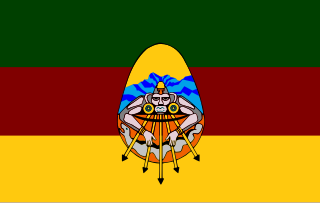 W
WThe Mixe are an indigenous people of Mexico inhabiting the eastern highlands of the state of Oaxaca. They speak the Mixe languages, which are classified in the Mixe–Zoque family, and are more culturally conservative than other indigenous groups of the region, maintaining their language to this day. A population figure of 90,000 speakers of Mixe were estimated by SIL international in 1993. The Mixe name for themselves is ayuujkjä'äy meaning "people who speak the mountain language" The word "Mixe" itself is probably derived from the Nahuatl word for cloud: mīxtli.
 W
WThe Mixtecs, or Mixtecos, are indigenous Mesoamerican peoples of Mexico inhabiting the region known as La Mixteca of Oaxaca and Puebla as well as the state of Guerrero's Región Montañas, and Región Costa Chica, which covers parts of the Mexican states of Oaxaca, Guerrero and Puebla.
 W
WMonte Alto is an archaeological site on the Pacific Coast in what is now Guatemala.
 W
WThe Nahuas are a group of the indigenous people of Mexico, El Salvador, Guatemala, Honduras, and Nicaragua. They comprise the largest indigenous group in Mexico and second largest in El Salvador. The Aztecs were of Nahua ethnicity, and the Toltecs are often thought to have been as well, though in the pre-Columbian period Nahuas were subdivided into many groups that did not necessarily share a common identity.
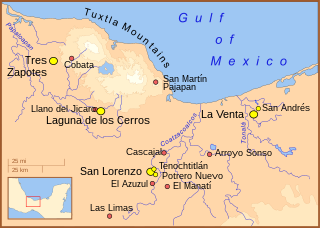 W
WThe Olmecs were the earliest known major Mesoamerican civilization. Following a progressive development in Soconusco, they occupied the tropical lowlands of the modern-day Mexican states of Veracruz and Tabasco. It has been speculated that the Olmecs derived in part from the neighboring Mokaya or Mixe–Zoque cultures.
 W
WPelota purépecha, called Uárukua Ch'anakua in the Purépecha language, is an Indigenous Mexican sport similar to those in the hockey family. A common variant, distinguished as pasárutakua in Purépecha, uses a ball which has been set on fire and can be played at night. It has a league, several practicing communities and about 800 players across Mexico as of 2010. It is one of 150 pre-Hispanic Mexican games at risk of dying out along with Ulama.
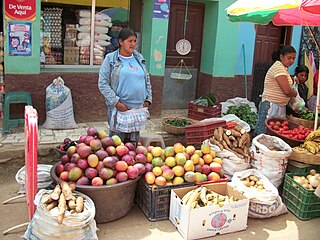 W
WThe Lenca are a Mesoamerican indigenous people of southwestern Honduras and eastern El Salvador in Central America. They once spoke the Lenca language, which is now nearly extinct. In Honduras, the Lenca are the largest indigenous group, with an estimated population of more than 450,000.
 W
WThe Pipil are an indigenous Mesoamerican peoples inhabiting parts of the present-day region known as El Salvador, which they referred to as "Cuscatlán". They are also known as "Nahuas". Although very few speakers are now left, they spoke the Nawat language. It belongs to the Nahuatl dialect group, which stretches from Durango in Mexico to El Salvador, and historically as far as the Nicoya Peninsula of Costa Rica. It is thought that the Pipil, along with the neighboring Nicarao people, migrated from Central Mexico to their present location around A.D. 900, after the Chichimeca-Toltec civil war. As they settled in the area, they founded the city-state of Cuscatlan, absorbed many other preexisting polities, and intermarried with the native peoples, mostly Lenca, Poqomam, and Xinca. The Pipil are closely related to the neighboring Nicarao people from Nicaragua, who split from the Pipil around 1200 CE when they migrated south. They also spoke Nawat, which became the lingua franca there during the 16th century. A hybrid form of Nawat-Spanish was spoken by many Nicaraguans up until the 19th century when it became extinct there, but is still around in parts of El Salvador, although still crticially endangered.
 W
WThe Preclassic period in Maya history stretches from the beginning of permanent village life c. 1000 BC until the advent of the Classic Period c. 250 AD, and is subdivided into Early, Middle, and Late. Major archaeological sites of this period include Nakbe, Uaxactun, Seibal, San Bartolo, Cival, and El Mirador.
 W
WThe Purépecha State, also known by the term Tarascan State, was a polity in pre-Columbian Mexico. Its territory roughly covered the geographic area of the present-day Mexican state of Michoacán, as well as parts of Jalisco and Guanajuato. At the time of the Spanish conquest, it was the second-largest state in Mesoamerica.
 W
WThe Purepecha or Tarascans are a group of indigenous people centered in the northwestern region of Michoacán, Mexico, mainly in the area of the cities of Cheran and Patzcuaro.
 W
WQʼeqchiʼ are a Maya people of Guatemala and Belize. Their indigenous language is the Qʼeqchiʼ language.
 W
WThe Sierra de Tamaulipas is an isolated, semi-tropical mountain range in the Mexican state of Tamaulipas. Its highest point is 1,260 m (4,130 ft). There are no cities or towns in the Sierra and the small population is largely agricultural. The higher elevations of the Sierra have forests of oak and pine, contrasting with the semi-arid brush that dominates at lower altitudes. Several archaeological sites establish that the Sierra de Tamaulipas was the northern outpost of the agricultural Mesoamerican peoples of eastern Mexico.
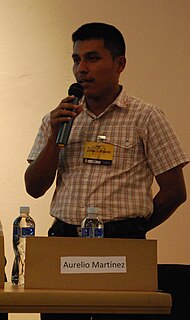 W
WThe Mayangna are a people who live on the eastern coasts of Nicaragua and Honduras, an area commonly known as the Mosquito Coast. Their preferred autonym is Mayangna, as the name "Sumo" is a derogatory name historically used by the Miskito people. Their culture is closer to that of the indigenous peoples of Costa Rica, Panama, and Colombia than to the Mesoamerican cultures to the north. The Mayangna inhabited much of the Mosquito Coast in the 16th century. Since then, they have become more marginalized following the emergence of the Miskito as a regional power.
 W
WThe Purépecha State, also known by the term Tarascan State, was a polity in pre-Columbian Mexico. Its territory roughly covered the geographic area of the present-day Mexican state of Michoacán, as well as parts of Jalisco and Guanajuato. At the time of the Spanish conquest, it was the second-largest state in Mesoamerica.
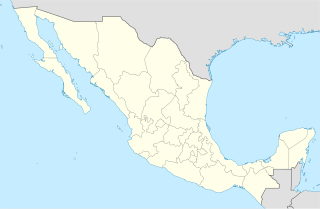 W
WTeotitlán del Valle is a small village and municipality located in the Tlacolula District in the east of the Valles Centrales Region, 31 km from the city of Oaxaca in the foothills of the Sierra Juárez mountains. It is part of the Tlacolula Valley district. It is known for its textiles, especially rugs, which are woven on hand-operated looms, from wool obtained from local sheep and dyed mainly with local, natural dyes. They combine historical Zapotec designs with contemporary designs such as reproductions of famous artists' work. Artists take commissions and participate in tours of family-owned workshops. The name Teotitlán comes from Nahuatl and means "land of the gods." Its Zapotec name is Xaguixe, which means "at the foot of the mountain." Established in 1465, it was one of the first villages founded by Zapotec peoples in this area and retains its Zapotec culture and language.
 W
WThe Tepanecs or Tepaneca are a Mesoamerican people who arrived in the Valley of Mexico in the late 12th or early 13th centuries. The Tepanec were a sister culture of the Aztecs as well as the Acolhua and others—these tribes spoke the Nahuatl language and shared the same general pantheon, with local and tribal variations.
 W
WThe Tepehuas are an indigenous people of Mexico whose name means in Nahuatl, "people of the mountain", although they refer to themselves without a term or name that encompasses a supposed ethnic group. They also use endoethnonyms that originate in Spanish-influenced Nahuatl:masipijní: the Tepehua people hamasipiní: who lives on a hill hamasip: owners of hills
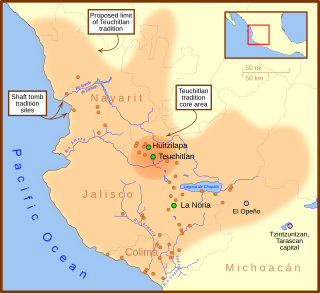 W
WThe Teuchitlán culture was one of several related cultures in West Mexico during the Late Formative to Classic period. Situated in the Tequila Valleys of Jalisco, the Teuchitlán culture shared in the tradition of burying some of their dead in shaft and chamber tombs. Archaeological work from the past few decades have demonstrated that West Mexico was not occupied by one homogeneous culture, historically referred to as the shaft tomb tradition, that stretched from Nayarit, Jalisco, and Colima. Instead, West Mexico was composed of multiple cultures with several distinct commonalities.
 W
WTlatilco culture is a culture that flourished in the Valley of Mexico between the years 1250 BCE and 800 BCE, during the Mesoamerican Early Formative period. Tlatilco, Tlapacoya, and Coapexco are the major Tlatilco culture sites.
 W
WThe Toltec culture is a pre-Columbian Mesoamerican culture that ruled a state centered in Tula, Hidalgo, Mexico in the early post-classic period of Mesoamerican chronology. The later Aztec culture saw the Toltecs as their intellectual and cultural predecessors and described Toltec culture emanating from Tōllān [ˈtoːlːaːn] as the epitome of civilization; in the Nahuatl language the word Tōltēcatl [toːlˈteːkat͡ɬ] (singular) or Tōltēcah [toːlˈteːkaʔ] (plural) came to take on the meaning "artisan". The Aztec oral and pictographic tradition also described the history of a Toltec Empire, giving lists of rulers and their exploits.
 W
WThe Tolupan or Jicaque people are an indigenous ethnic group of Honduras, primarily inhabiting the northwest coast of Honduras and the community Montaña de La Flor in central Honduras.
 W
WThe Totonac culture or Totonec culture was a culture that existed among the indigenous Mesoamerican Totonac people who lived mainly in Veracruz and northern Puebla. Originally, they formed a confederation of cities, but, in later times, it seems that they were organized in three dominions: North, South and Serran. Its economy was agricultural and commercial. They had large urban centers such as: El Tajín (300–1200), which represents the height of the Totonac culture, Papantla (900–1519) and Cempoala (900–1519).
 W
WThe Tzʼutujil are a Native American people, one of the 21 Maya ethnic groups that dwell in Guatemala. Together with the Xinca, Garífunas and the Ladinos, they make up the 24 ethnic groups in this relatively small country. Approximately 100,000 Tzʼutujil live in the area around Lake Atitlán. Their pre-Columbian capital, near Santiago Atitlán, was Chuitinamit. In pre-Columbian times, the Tzʼutujil nation was a part of the ancient Maya civilization.
 W
WClassic Veracruz culture refers to a cultural area in the north and central areas of the present-day Mexican state of Veracruz, a culture that existed from roughly 100 to 1000 CE, or during the Classic era.
 W
WThe Western Mexico shaft tomb tradition refers to a set of interlocked cultural traits found in the western Mexican states of Jalisco, Nayarit, and, to a lesser extent, Colima to its south, roughly dating to the period between 300 BCE and 400 CE, although there is not wide agreement on this end date. Nearly all of the artifacts associated with this shaft tomb tradition have been discovered by looters and are without provenance, making dating problematic.
 W
WThe Yalain have been proposed as a Maya polity that existed during the Postclassic period in the Petén Basin of northern Guatemala, based in the central Petén lakes region. A small town called Yalain was described in 1696 by the Franciscan friar Andrés de Avendaño y Loyola. It was said to consist of a relatively small number of residences clustered within rich agricultural land. The town was located to the east of Lake Petén Itzá and was said to have been farmed by the inhabitants of Nojpetén, the capital city of the Itza kingdom. The political extent and archaeology of the Yalain is poorly understood.